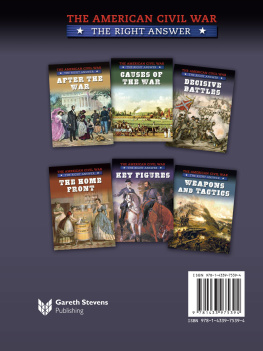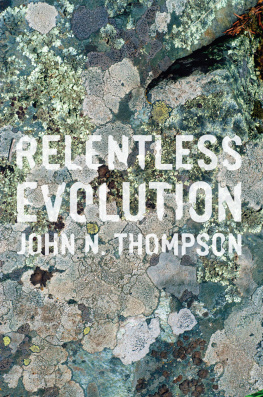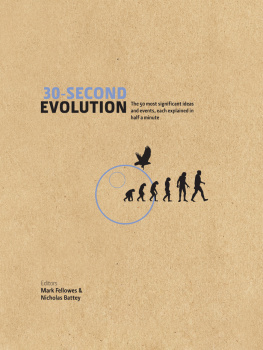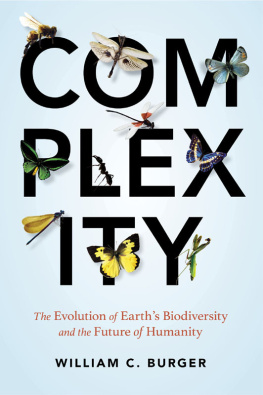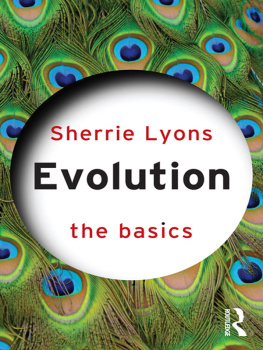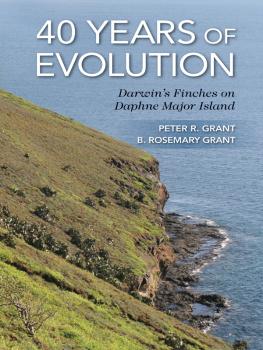First of all, I want to thank Steven L. Mitchell and Prometheus Books for giving me the opportunity to write this book. This book would not have existed without them. Our collaboration has been wonderful, and I am still impressed by how timely and efficiently they do everything. I am especially grateful to Hanna Etu, Mark Hall, Jill Maxick, Liz Mills, Bruce Carle, Cheryl Quimba, Cate Roberts-Abel, and Jade Zora Scibilia, for all their work until the publication of the present book. Even though I am sure that all of these people did a wonderful job, I owe special thanks to Jade Zora Scibilia, who meticulously copyedited the text. I do look forward to working on a next book with them.
My career as a biology teacher and educator has focused on helping students at all levels, from kindergarten to teacher training programs, acquire a rational and authentic view of life. My students, and their conceptions, have inspired and motivated me to write books, hopefully rigorous and accessible ones, which would help any interested reader understand biological phenomena and the related concepts. It is certainly no coincidence that my two previous books are titled Understanding Evolution and Making Sense of Genes; unavoidably, the present book shares some of the insights of those two books. Therefore, I am grateful to my former students for being a source of inspiration and motivation. I hope that the present book, which is intended for any thoughtful lay persons interested in biology, will sufficiently explain basic phenomena and share with them my own understanding of life.
I am indebted to John Beatty for his work that has been an inspiration for this book. It was back in 2007, when I had just finished my doctoral dissertation on evolution education, that, while we did not know each other, I just contacted him and proposed to meet him and talk. His landmark paper, Replaying Life's Tape, had recently been published and I had so much I wanted to discuss with him. I thus visited Vancouver, after a conference at Calgary, and Johnone of the nicest people you can ever meetwas not only a great host but also an amazing discussant. It was then that I mentioned to him for the first time the idea about writing a book on contingency. His initial encouragement made me determined to write it. And I am happy that you are now holding it in your hands.
I am also indebted to Jonathan Losos, who graciously sent me a copy of his magnificent book Improbable Destinies, which was approaching publication as I was finishing writing the present book; as well as to Bernard Wood, who kindly provided me with and useful essays related to that. Finally, I am very grateful to Francisco Ayala, Henry Gee, Alan Love, Kevin McCain, Alessandro Minelli, Ronald Numbers, Gregory Radick, Michael Ruse, and Elliott Sober for their comments and suggestions on the manuscript's earlier versions.
Last but not least, I am always grateful to my family, Katerina, Mirka, Giorgos, who bear with me while I am reading or writing or discussing my new book project at home. Writing will always be a hobby for me, even if I ever end up doing it as my main job. Thus, whereas other fathers and husbands deal with the garden or watch sports programs on TV while at home, I am reading and writing for hobbyit is not that bad, is it? Therefore, my wife and children do not miss me, but there must certainly be some other things we could have done together during those book-devoted hours. Lost hours are lost forever, but I hope that one day they may read this book and feel that it was worth the time and effort.

Have you ever asked yourself why we have hearts? Most people would reply: In order to pump blood. Many human characteristics seem to serve goals, and these goals look quite obvious in many cases. Why do we have legs? In order to stand up and walk is an answer that would make sense to most people. Why do we have opposable thumbs? In order to grasp and handle objects, most people would also reply. And this can go on for any of our body parts and organs you can think of: brain, stomach, lungs, liver, to name a few. The roles of other characteristics may seem less obvious, but they also seem to be there. Why do we have eyebrows? In order to prevent sweat from entering our eyes is a plausible answer. Why do we have hair on our heads? In order to keep our brain warm is again a plausible answer. But if you think harder, it is not easy to assign goals to all characteristics. Why do we have toes? Why do men have nipples and facial hair? And so on. Perhaps there is a less obvious role in these cases, but it must be there, you may think. Otherwise, if they do not do anything, why would we have certain characteristics? In other words, why would characteristics that serve no use or purpose exist at all? You may have thought about questions like these in the past, and you may have arrived at certain answers like those above. In this chapter I invite you to forget for a moment your earlier conclusions and follow me on a foray into thinking about purpose and design in nature. Answers to such Why X? questions that explain the presence of a characteristic are considered explanations. Throughout the present book, I consider explanations as statements that identify the causes of a biological characteristic or phenomenon, that is, that provide an account for why it happened or
The discussion about purpose and design in Western culture goes back more than two thousand years, at least back to Plato and Aristotle. Plato believed that the universe was created by a Divine Craftsman, the Demiurge (Creator). Plato considered the transfusion of the soul of the Demiurge into the universe as the final cause of its creation. This process had to take into account the actions of Need, the mythical equivalent of the properties of the structure of matter, which imposed constraints to the work of the Demiurge. Plato thus recognized two types of causes, which he viewed as interdependent and not in conflict. Therefore, the universe was an artifact that resulted from the purposeful and rational action of the Demiurge that had dominated over the irrational Need. This is a view of the world being unnatural, in the sense that it is the product not of natural processes but that of a divine craftsman. Aristotle was a student of Plato who tried to answer questions about phenomena in organisms by looking for natural causes. He thus described four causes that acted in nature: the efficient cause, the material cause or matter, the formal cause or form, and the final cause; and he considered all four of them necessary for understanding. The classic illustration of these causes is with the example of a statue: (1) the material cause is the bronze of which the statue is made, which undergoes a change that results in the statue; (2) the formal cause is the shape of the statue, as the bronze is melted and used in order to acquire a particular shape; (3) the efficient cause is the knowledge that the craftsman implements to create the statue; and (4) the final cause is the goal for the fulfillment of which the whole process of the production of the statue is taking place. Even though the example of the statue might make one think that Aristotle thought in terms of design like Plato, this is not the case. For Aristotle, there were no external intentions, and the final causes served the maintenance of an organism. Thus, the final cause for the existence of an organ would be its





